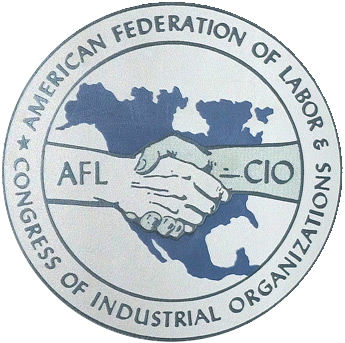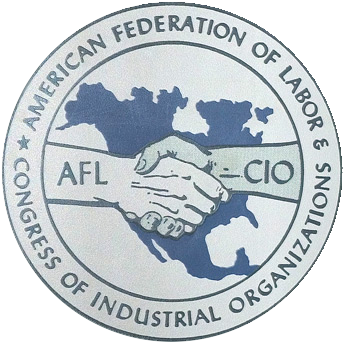The American Federation of Labor-Congress of Industrial Organizations (AFL-CIO) is the largest federation of labor unions in the United States. Formed in 1955 in a merger between the American Federation of Labor and the Congress of Industrial Organizations, the AFL-CIO boasts membership of over 9 million voting members and 3 million associate members.1 While the AFL-CIO retains a large member base, the proportion of the workforce that is organized by labor unions has declined substantially since the 1960s.4
This trend only accelerated under Richard Trumka’s leadership. In the AFL-CIO’s 2016 fiscal year, the union reported $45,972,521 in political activities and lobbying (including $8,165,576 in deposits of employee-elected contributions to the union’s political action committee).5 Recipients of AFL-CIO dues-funded contributions include the Center for American Progress (CAP) Action Fund, the Economic Policy Institute (EPI), and the New World Foundation.6 The federation has also proposed admitting progressive groups other than unions, including the NAACP, the Sierra Club, and MomsRising, to its membership as either formal partners or affiliates.9
The Congress of Industrial Organizations (CIO) split from the AFL in November 1935, shortly after the passage of the National Labor Relations Act (NLRA), which set the first federal rules for collective bargaining in American workplaces. The CIO proposed organizing based on workplace rather than skill, and the two union federations remained separate until the 1950s.4
The Shift Left and SEIU Split
Also see John Sweeney
While the AFL-CIO under Meany and Kirkland had been generally center-left, a revolt within the union’s leadership after Kirkland’s retirement led to substantial change. Kirkland retired in August 1995, appointing Thomas R. Donahue president of the AFL-CIO. He would not hold office for long, being deposed by a slate of candidates led by John Sweeney of the Service Employees International Union (SEIU) at the federation’s 1995 national convention.12
This has supported a push to the left in the AFL-CIO’s activities that has continued under Sweeney’s successor, Richard Trumka. Union members have historically split roughly 60-40 in favor of Democrats, but the political operations that ballooned under Sweeney and Trumka are highly partisan in favor of the left.18
Direct representation of employees is largely the responsibility of local labor unions. The AFL-CIO reports fewer expenditures on representational activities than political activities and lobbying on the federation’s annual report. Representational activities reported on the AFL-CIO’s annual report focus on organizing and solidarity.
Support for Liberal Organizations
At least since Sweeney was elected AFL-CIO president, the AFL-CIO has been a substantial supporter of the broader left-progressive movement. The federation contributes millions in dues money—in 2016, likely exceeding $12 million—to liberal activist groups annually.19 Federal labor law allows labor organizations to spend dues money on political lobbying and organizing, with certain limitations.21 Committee on States, a state-level project of the Democracy Alliance, received an additional $25,000 in that year.21
The list of progressive organizations receiving funds from the AFL-CIO is long and covers groups in most areas of left-wing politics. Liberal economic think tanks and mobilizing groups like Economic Policy Institute, Center for Popular Democracy, and Center for Economic and Policy Research are among the recipients of AFL-CIO support. Also receiving support are progressive groups that support union-associated special interest positions, such as the Alliance for Retired Americans (which opposes public-sector pension reform) and the Coalition for Better Trade (a protectionist lobby group).21
Openly left-wing media outlets receive AFL-CIO funds as well. The Center for American Progress Action Fund, which published the ThinkProgress family of blogs, received $25,000 from the federation in 2016.21 The AFL-CIO also sponsors a progressive radio show aimed at union households, America’s Work Force Radio.21
The union federation also sponsors a handful of groups intended to spread the progressive message to conservative-leaning constituency groups. The most notable is likely the Union Sportsmen’s Alliance, an association for union member hunters. In 2016, the group received $182,000 from the AFL-CIO.25
Green New Deal
In March 2019, the AFL-CIO sent a letter to two Democratic Party sponsors of the Green New Deal (H.R. 109) bill, Sen. Ed Markey (D-MA) and Rep. Alexandria Ocasio-Cortez (D-NY), expressing their opposition to the House Resolution. The letter said that the Green New Deal “makes promises that are not achievable or realistic” and that the AFL-CIO would “not accept proposals that could cause immediate harm to millions of our members and their families.” 27 Under federal law, direct contributions from union treasuries to political campaigns are restricted. Unions are allowed to offer their members the opportunity to contribute to a union-controlled “separate segregated fund” that channels contributions to union-supported candidates and political party committees.35 Most are the six trade departments and the Coalition of Kaiser Permanente Unions, which provide forums for AFL-CIO member unions to coordinate industry- or employer-specific policies. The union also reports its in-house insurance company for members as a subsidiary organization.35
The AFL-CIO also sponsors the Union Lawyers Alliance (formerly the AFL-CIO Lawyers’ Coordinating Committee). The Alliance is a membership organization of union-side employment lawyers, enabling union attorneys to pool resources and organize their own demonstrations and activism within the union movement.21
The American Center for International Labor Solidarity (also known as the Solidarity Center) is an international-focused 501(c)(5) associated with the AFL-CIO. According to tax filings, it is principally funded by government grants.38The Working for America Institute is a 501(c)(3) organization that runs apprenticeship programs under contract to the U.S. Department of Labor.40 In past years, the Institute has received grants from the Energy Foundation, the Alfred P. Sloan Foundation, and the Ford Foundation.41
Regional and Local Federations
In addition to its member unions and the national headquarters, the AFL-CIO organizes state federations, regional federations, and city-level labor councils to organize its member unions on the local level. The organizations, which are generally do not qualify as labor unions that fall under the transparency rules set by the Labor-Management Reporting and Disclosure Act (LMRDA), conduct campaigns at the state, regional, and local levels to advance the union’s agenda. 0){
let parent=divs[divs.length-1].parentNode;
let footer=divs[divs.length-1];
delete divs[divs.length-1];
for (let i=2; i




